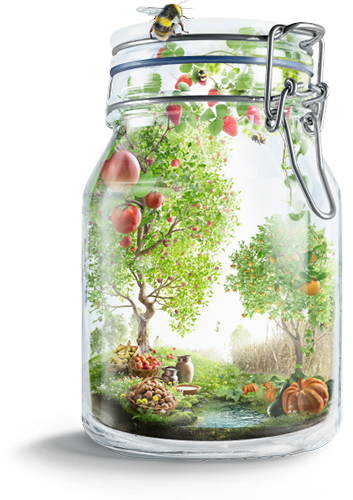The foundations are laid 1886-1935
-
1886-1889
The early years
1886-1889The early years
Hero was established in 1886 when two friends and schoolmates, Gustav Henckell and Gustav Zeiler, set up the Henckell & Zeiler, Conservenfabrik Lenzburg to process fruit and vegetables. On June 17, 1886, the first can of tinned peas is produced, followed by gooseberry, mirabelle plum, and greengage jam. Henckell was an experienced conserve factory employee while Zeiler was a fruit farmer.
In 1889, Gustav Zeiler, 30, dies unexpectedly. Carl Roth joins the company as a new partner.
-
1890-1900
Two Hero pillars founded
1890-1900Two Hero pillars founded
In America, Beech-Nut was founded in 1890 by five residents of Canajoharie, New York. The company name evoked the beech trees that grew around the area as well as the ‘nutty’ flavor of the company’s hams.
In 1899, the company Chemische Fabrik oHG was founded (July 3) by Otto Fromm, a businessman, and his older brother Dr Paul Fromm, a chemist. This was the precursor of the Schwartau company. Their first products were artificial honey, floor wax and floor oil.
-
1901-1909
The turn of the century
1901-1909The turn of the century
In the early 1900s, a number of companies in the preserved food industry moved to the southern Spain region because of the agricultural production helped by favorable climate conditions. Among these was the French-British concern Champagnes et Frères Ltd, which opened a plant in Alcantarilla and another in Abarán. This company would later form the basis of Hero Spain.
By 1904, the Schwartau expansion program starts. The site of the former Lynchenheim brewery in Lübecker Strasse is taken over after a fire. This location still houses Plant I and the company's HQ. Production of floor wax and floor oil stops. Their first sugar refinery is built and the company produces artificial honey, candied lemon peel, cranberry compote, and plum jam.
-
1910-1919
Hero name created
1910-1919Hero name created
The Hero brand name, derived from the first two letters of the partners`names, HEnckell and ROth, was launched in 1910. Tin cans also inspired the name with the letters H, R, and O resembling their shape. This remains true today.
Schwartau produces its first jam in a tin, called Schwartauer Fünffrucht-Confitüren in 1912. In this year, the company also changed name to Schwartauer Honigwerke & Zuckerraffinerie AG.
Hero enters the Benelux market in 1914. The fruit and vegetable business owned by the Jensen family was acquired by Hero as part of a drive by the latter to grow the business. In the same year, Hero was quoted on the stock market and founder Karl Roth dies.
-
1920-1924
Companies’ birth and growth
1920-1924Companies’ birth and growth
On the other side of the Atlantic, Beech-Nut started a major expansion project. The company started experimenting with a variety of products such as cheese, dates, seafoods, and maple syrup. By the 1920s, Beech-Nut manufactured or processed a wide array of foodstuffs. Chewing gum would prove to be a major product breakthrough.
Sugar is in short supply in Germany in 1921 so Schwartau adds chocolate and marzipan to their portfolio.
A year later in 1922, Hero Spain is formed. Hero Sewell S.A. (also known as Hero Alcantarilla) was formed after Hero acquired the majority of the Champagnes et Frères Ltd company. The Spanish and Swiss teams worked together, with recipes provided by Lenzburg and production taking place in Spain.
-
1925-1935
Iconic logo created
1925-1935Iconic logo created
Schwartau’s iconic logo with the seven towers of Lübeck is designed by painter, commercial artist and lecturer Alfred Mahlau in 1925.
In 1930, Hero Benelux entered the soda market with first Dutch soda called Perl. In the 1930s, dry milk was invented by Swedish nutritionist Maria Johanna (Ninni) Kronberg. Her invention laid the foundation for Semper.
The economic situation in the States in 1931 meant that few new products were introduced by Beech-Nut. One exception was baby food. Beech-Nut’s first strained baby food came in 1931 followed by chopped ‘junior’ food in 1938.






